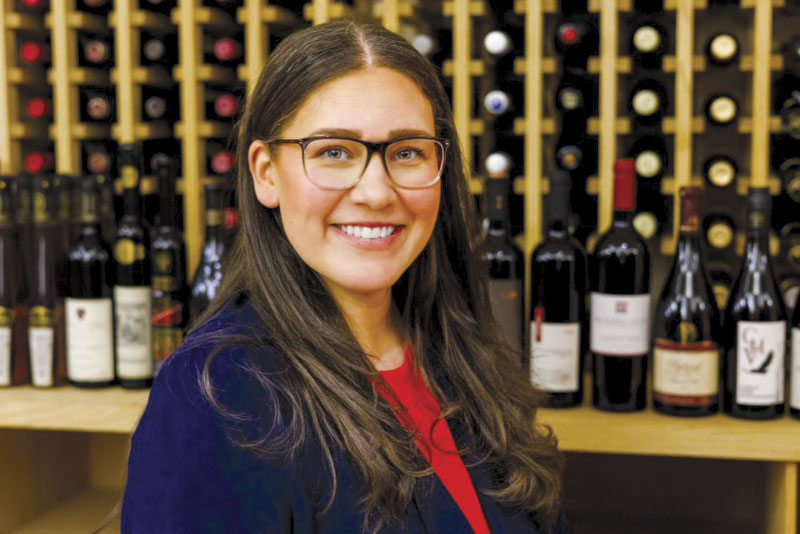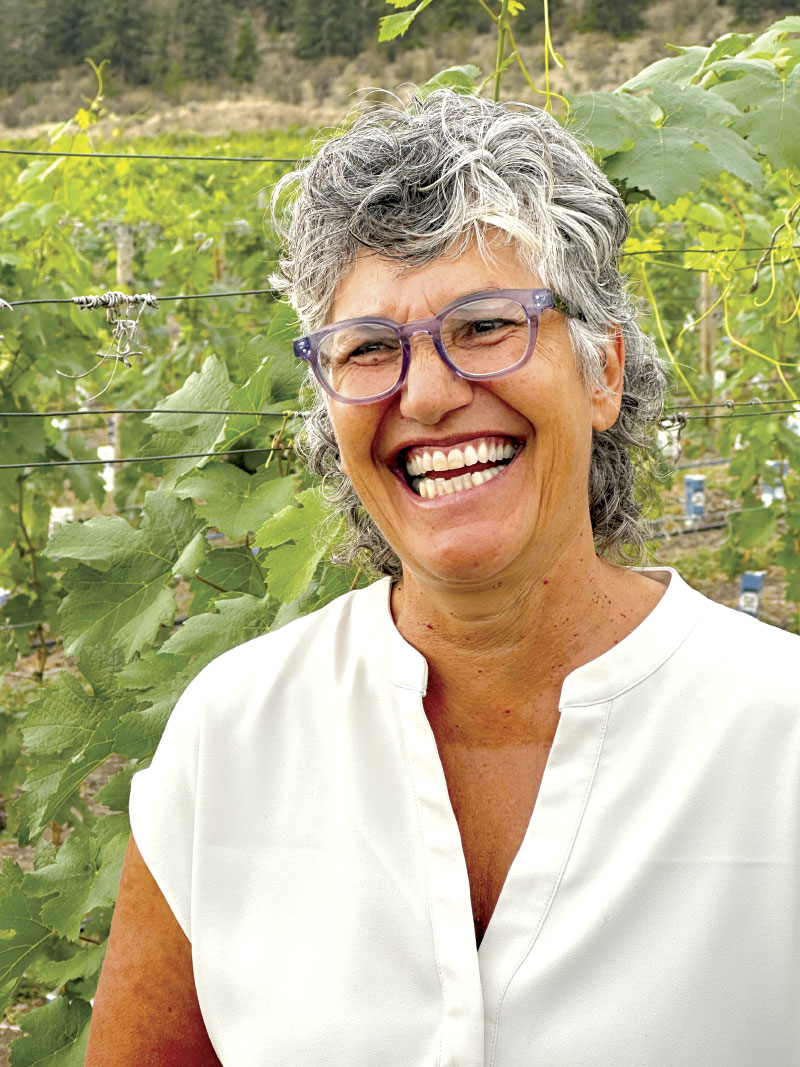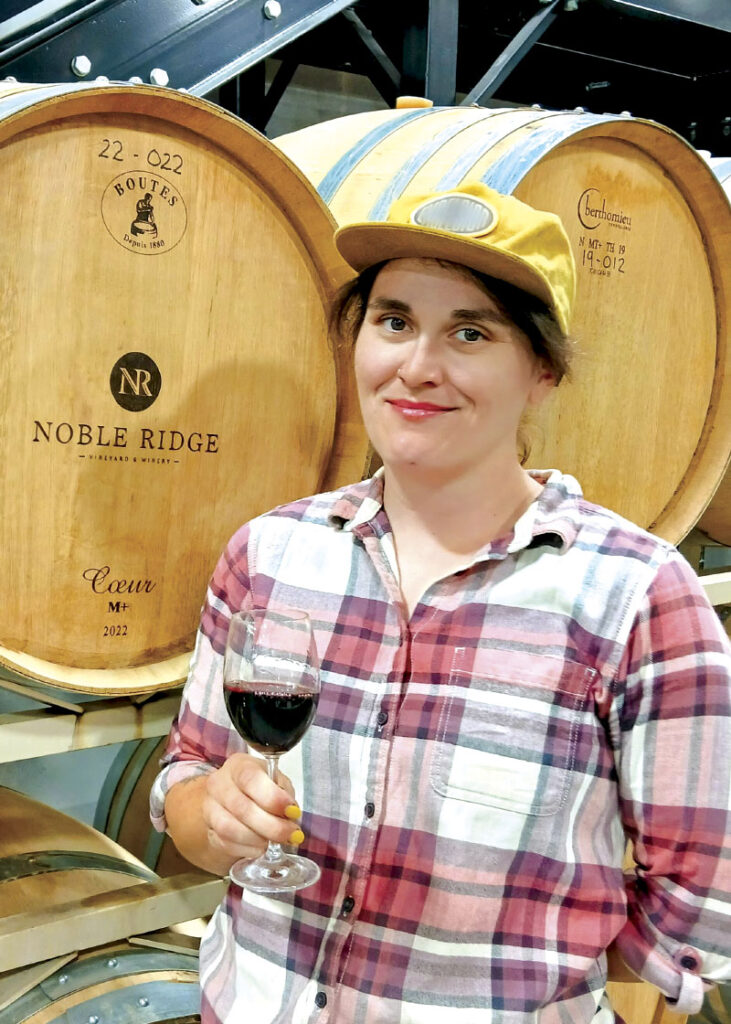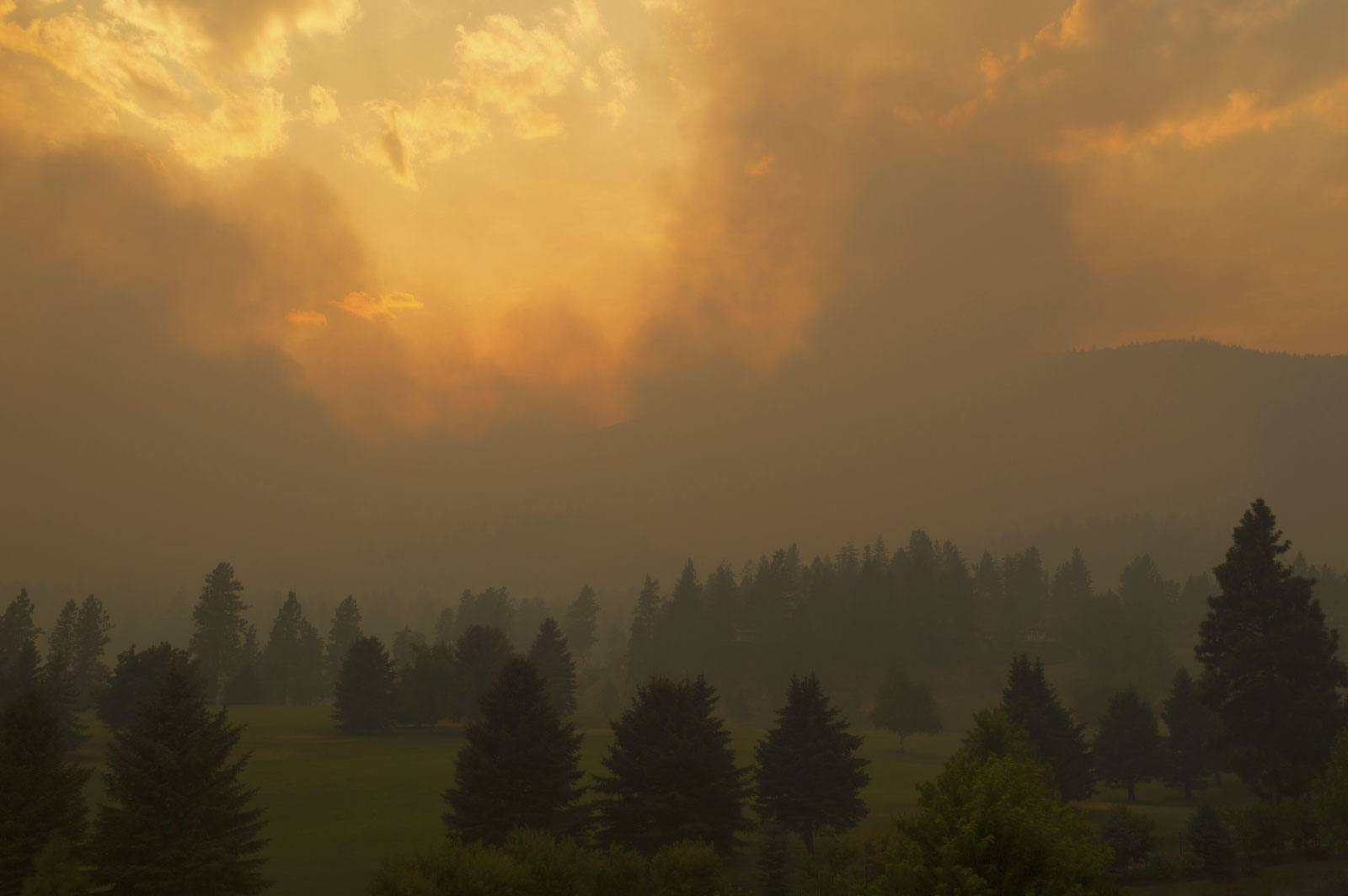Every year, there are headlines about wildfires in wine regions around the world – France, Spain, Portugal, Australia and in Canada, too. Chances are that most winemakers will come across smoke-tainted grapes at some point in their careers.
“Ultimately, smoke taint is the objectionable note in wines produced from smoke-exposed grapes. It is perceptible by smell, taste and aroma,” said Wesley Zandberg, an associate professor of chemistry and member of the Wine Research Centre at the University of British Columbia’s Okanagan Campus.
Smoke’s distinctive odour is created by specific phenolic compounds. Volatile phenols created by burning biomass are transported into ripening grapes by smoke, which is absorbed and then linked to the grape’s sugars. During fermentation, those sugar-bound, smoke-derived phenols are broken back down, releasing the original pungent phenols into the wine. “People in the industry might argue that we should maybe call it smoke impact,” Zandberg said. “This is because not all smoke-exposed grapes produce smoke-exposed wines. That’s important to note.”
There are also ways to mitigate its effects.
Reverse osmosis
For many years, reverse osmosis has been a common method for removing various taints from wines. It works by forcing the wine through a semi-permeable membrane, which removes larger molecules such as smoke-derived phenols. It has been used primarily by bigger wineries, which have the money and resources to make it work. “But by the time you’ve removed the offensive molecules, you’ve also removed much of the pleasant aromas of the wine too. It certainly hasn’t produced anything that’s worth the cost,” said Zandberg.


Jennifer Kelly, a senior scientist at Brock University’s Cool Climate Oenology and Viticulture Institute, shares a similar perspective. “Reverse osmosis is not necessarily targeted for these compounds and could potentially remove other compounds in the wine that may be favourable,” she said. A winemaker, she says, must then find other ways to add a wine’s positive characteristics back into the bottle through blending or other means.
Timing matters
A day of smoke likely isn’t a big deal, but lingering smoke and the resulting extended exposure of the fruit to the particles will likely be an issue. It’s also worth considering the time of year the smoke occurs. Spring isn’t as big of a deal as later in the season. “Grapes are most susceptible seven days post-veraison,” said Kelly. “That timing can make or break a vintage.” Before committing to fermenting the entire harvest, try a microferment, Kelly says. “The grapes may look clean and smell clean, but they may not be clean,” she said. “A trial microfermentation would be a really good idea.”
Pick fruit later and use oak
“It is important to note that many of the same phenols present in smoke are also found in oak,” Zandberg said. “Clearly, context and concentration are both important.”
Like Zandberg, Val Tait, winemaker and general manager of Gold Hill Winery in B.C.’s Okanagan Valley, prefers not to call it smoke taint. Instead, she uses the term smoke influence. “For me, what has worked is to bring it into the cellar and try to develop a wine where that profile fits. That means making a wine that’s bolder, more expressive,” she said.


“The fruit is picked later, when it has much more ripe black fruit flavours, and [is] then brought into the cellar to work with oak with a higher toast. More extended maceration, too, [helps] to build the wine up so that it’s a bolder expression and the smoke segues into that quite nicely.” If you fight against the smoke and try to make the style you made in previous vintages, you’ll fail, says Tait. “You’ll make a very disjointed wine. Just find a way to work with it,” she said.
Kelly says that sometimes, oak chips can be effective for masking smoke. “But well-toasted barrels can have a compounding effect if you have a smoke-tainted wine,” she said.
Consider carbon
Libby Nixon, assistant winemaker and assistant viticulturist at Noble Ridge, has found that adding carbon to the wines (post-ferment for reds and at the juice stage for whites, rosés and hard pressings) can help somewhat. “The smoke will bind to the carbon and then you can just take it out,” Nixon said. “It’s cost-effective, but you don’t want to add too much because it will strip away some of the desirable characteristics.”
Hand harvest
Picking grapes by hand helps limit the number of leaves and extraneous material before fermentation; the leaves may make the perception of taint worse, Kelly says.
Limit skin contact
From Zandberg’s perspective, research needs to focus on the way grapes and smoke interact. He says these targeted strategies and in-winery reduction are particularly exciting. “Chemically understanding the interaction between smoke and the surface of a grape is critical. If we can understand this at a molecular level, we can manipulate it at a molecular level,” said Zandberg. “Then we can concentrate on how we can mitigate it in the winery.”
Grapes are most susceptible seven days post-veraison. That timing can make or break a vintage.
Jennifer Kelly, Brock University
Limiting the grapes’ skin contact during fermentation – as in, no hard pressings – may prevent some taint. That’s because “skin thickness and bunch compactness can also have an impact,” says Kelly. It’s worth noting that some grapes seem to be more susceptible to smoke exposure than others. Syrah and Shiraz, for instance, naturally contain these compounds. If possible, blend wine from a previous vintage or a smoke-free vineyard to dilute the effect of the taint.
Pick yeasts carefully
Zandberg keeps an empty wine bottle on his desk, from an especially smoky vintage. The winemaker used “fancy yeasts,” Zandberg says, the sort associated with pleasant aromas. That particular bottle was marketable, but vintages from the same varietals of grapes produced by a nearby winery had to be pulled from the shelves. “Yeasts can make a big difference to smoke influence if we have a better understanding of how yeast-produced aromas can make, or in some cases, enhance, the smokiness,” said Zandberg. In other words, when potential smoke taint is a concern at harvest and commercial yeasts are being used, it’s important to select yeast strains carefully. “You should find strains of yeast that are less prone to smoke taint,” Zandberg said.
Kelly said, “They can enhance fruity aromas and esters to mask the smoke.” Kelly also says that grapes grown 50 to 80 kilometres from the fire typically see the most smoke influence. “Distance is important,” she said. “Beyond that, it doesn’t seem to be as impactful.”
Stay on top of the research
Mitigation research is underway now in Canada, Australia and the U.S., and results are released periodically. Past studies include washing the vines and grapes with water, ethanol and milk; none have changed the perception of smoke in the finished wines. In 2019, a group of researchers at the University of Adelaide in Australia applied kaolin (clay) to fruit approximately 10 days after the start of veraison, but before smoke exposure. Results showed its effectiveness depended on the extent of coverage; Merlot seemed to benefit from the kaolin spray, but Sauvignon and Chardonnay didn’t show much difference because the kaolin didn’t adequately adhere to the fruit.

Also at the University of Adelaide, researchers have had some success experimenting with molecularly imprinted polymers, adsorbents designed to bind smoke taint compounds, removing them from wine. “We’re also working with activated carbon fabric to prevent smoke contamination of grapes in the vineyard – again, results are promising, but there are some logistical challenges to overcome,” said Kerry Wilkinson, a professor of oenology at the University of Adelaide. “Results from trials combining separation technologies such as membrane filtration and spinning cone column distillation with the use of adsorbents are also promising.”
Look ahead to next year
The thing about smoke influence is that it’s hard to predict how or when it will show up. Sometimes, it’s evident at crush, when making the wine. Other times, it may not show up in the juice, but will show up months or even years down the road, long after the wine has been bottled. “It’s a bit tricky,” Kelly said. “These phenols can be odourless in the juice and emerge later, once you’re drinking the wine.”
Conversely, sometimes the influence shows up scientifically, but isn’t noticeable to the drinker. Some of Zandberg’s research is about “trying to deduce when smoke exposure will result in taint and when it will not,” he said. “Just because I can measure it chemically doesn’t mean the wine is bad. It just means I have really sensitive instruments.”
If experiencing a bad year, look ahead to the next. Smoke doesn’t seem to leave a lasting effect on vineyards. If a vineyard experiences smoke one year, but nothing the following year, that following year will likely be free of taint. “It won’t be a forever problem,” Kelly said. “I think it’s valuable for people to understand that.”
What is clear is that wildfires aren’t going away. “Climate change is making … our summers drier and that is leading to an increase in fires,” said Kelly. “But we are increasing the knowledge that helps winemakers better understand the risks and how to mitigate the effects [of smoke taint] down the road.”




